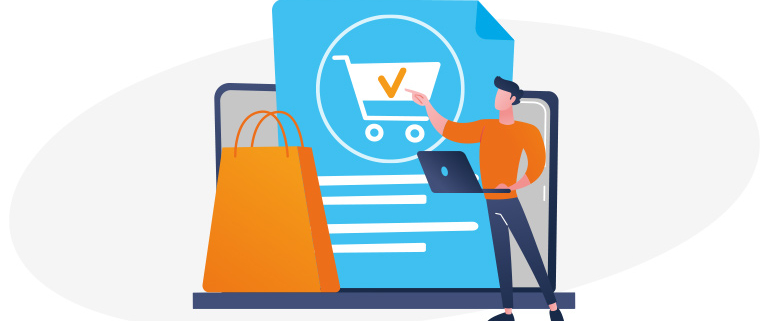The bounce rate is a topic that troubles many shops. Because it quickly becomes expensive, especially with Google Shopping ads: If users don’t like the selected product, they return to Google. The money spent on traffic is lost. And with Google Shopping ads, the bounce rate can easily reach 77%! Today, we would like to share a few tips on how you can reduce the bounce rate and avoid abandoned purchases.
Optimize product detail pages for paid traffic and reduce bounce rate
The reasons for bounces and abandoned sales are different. Especially with Google Shopping Ads, the bounce is often due to the fact that the selected product does not meet the expectations. According to Google specifications, customers must be directed to a page where the advertised product is in the foreground. In most cases, this is a product detail page. However, users are not able to see suitable alternatives at first glance. So, if they don’t like the product, they bounce off, and the potential revenue is lost along with the expenses for paid traffic.
optimize the bounce rate through alternative recommendations
In such cases, shops can easily take countermeasures: By placing alternative products in the visible area. Maybe users will find the products they are looking for here! Many of our customers make use of this type of optimization – and are able to achieve very good results.
Take our customer Galeria Karstadt Kaufhof, for example. Above the actually selected product on the product detail page, a selection of other similar products was inserted. The alternatives were determined by our Recommendation Engine, displaying only recommendations from the same category. Thus, not only the bounce rate decreased by 9%, but the user value increased by 23%!
Instead of alternative products, matching categories can also be displayed as tiles. Perhaps the user is looking for a new jacket – then he might find what he is looking for in this superordinate category.
INCREASE THE BUYING PRESSURE AND AVOID BOUNCES
“If a lot of people buy the product, it has to be good!” You should take advantage of this approach. Because this is exactly the mechanism that can increase the buying pressure for users. To this end, so-called social proof elements are displayed as an in-page element or as a side overlay. They are mainly known from the travel industry, but are also suitable for other industries. These elements show how many users have recently viewed and/or purchased the product in question. The higher the numbers, the more likely a user will consider making a quick purchase. After all, the product could soon be out of stock. These types of social proof elements are of course not only suitable for optimizing product detail pages when entering via paid traffic, but also in general.
You can determine the value of social proof elements using A/B and multivariant tests. Just like our customer Oui: With a social proof Element, the fashion brand was able to increase the conversion rate by 9 percent.
Download our case study now and learn more about Oui’s group motivation element.
KEEP CUSTOMERS FROM JUMPING SHIP WITH VOUCHERS AND GOODIES
Vouchers are not always popular – but they are an effective means of convincing customers to make a purchase after all. If you don’t want to work with general vouchers, you can also use them in a targeted and individual way. Perhaps there is a special discount in the category of the selected product? Then this should be brought to the users attention. Is there a page-wide promotion for new customers anyway? Then the users should be made aware of it. These kind of vouchers can also be equipped with a countdown in order to accelerate the completion of the purchase. If there is little time for consideration, the product may be added to the shopping cart sooner. These vouchers can also be displayed, for example, as an exit intent overlay right before the user leaves the website. This way, the discount voucher is only offered to users who would otherwise leave the website.
Another customer group that likes to be persuaded with coupons and offers are the bargain hunters. They often enter the shop from price comparison portals. As most of the times a CPC model is applied, this type of paid traffic should not be neglected. Besides current promotions, these users can also be referred to the sale area, for example by saying: “Hey, you’re from pricegrabber? Do you already know our sale area?”. If the users continue to browse for bargains there, the bounce rate drops and perhaps a purchase will be made after all.
ENSURE A LATER PURCHASE WITH NEWSLETTER REGISTRATIONS
Nevertheless, some users will still want to leave the site. As a last resort, the shop can suggest the newsletter signup via exit intent. Maybe it offers a new customer voucher or other promotions? The advantage with the newsletter registration: Users may not make a purchase right away, but they remain loyal to the shop and may buy at a later time.
Different ways to reduce the bounce rate
Even small changes in the web store can result in fewer users leaving the site again immediately. Especially the smart provision of alternative product recommendations – but a little buying pressure can work miracles as well. Which actions are really crowned with success differs from shop to shop. That’s why testing should always be part of the optimization strategy. Thus, you can find out which improvements really resonate with users.
Would you like to exploit the potential of your paid traffic? Please get in touch with us!
